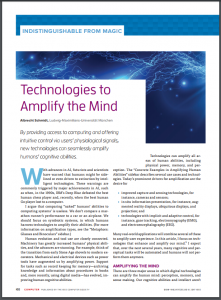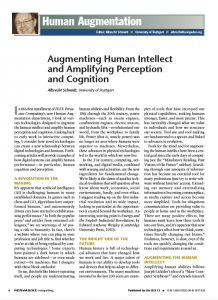
Current technical sensor systems offer capabilities that are superior to human perception. Cameras can capture a spectrum that is wider than visible light, high-speed cameras can show movements that are invisible to the human eye, and directional microphones can pick up sounds at long distances. The vision of this project is to lay a foundation for the creation of digital technologies that provide novel sensory experiences and new perceptual capabilities for humans that are natural and intuitive to use.
In a first step, the project will assess the feasibility of creating artificial human senses that provide new perceptual channels to the human mind, without increasing the experienced cognitive load. A particular focus is on creating intuitive and natural control mechanisms for amplified senses using eye gaze, muscle activity, and brain signals. Through the creation of a prototype that provides mildly unpleasant stimulations in response to perceived information, the feasibility of implementing an artificial reflex will be experimentally explored. The project will quantify the effectiveness of new senses and artificial perceptual aids compared to the baseline of unaugmented perception. The overall objective is to systematically research, explore, and model new means for increasing the human intake of information in order to lay the foundation for new and improved human senses enabled through digital technologies and to enable artificial reflexes.
Want to Find Out More?
We have published two magazine articles that described the vision of the project and our research approach:
 |
Albrecht Schmidt, “Technologies to Amplify the Mind,” in Computer, vol. 50, no. 10, pp. 102-106, 2017. [DOI] [PDF] |
|---|---|
 |
Albrecht Schmidt, “Augmenting Human Intellect and Amplifying Perception and Cognition,” [DOI] [PDF] |
